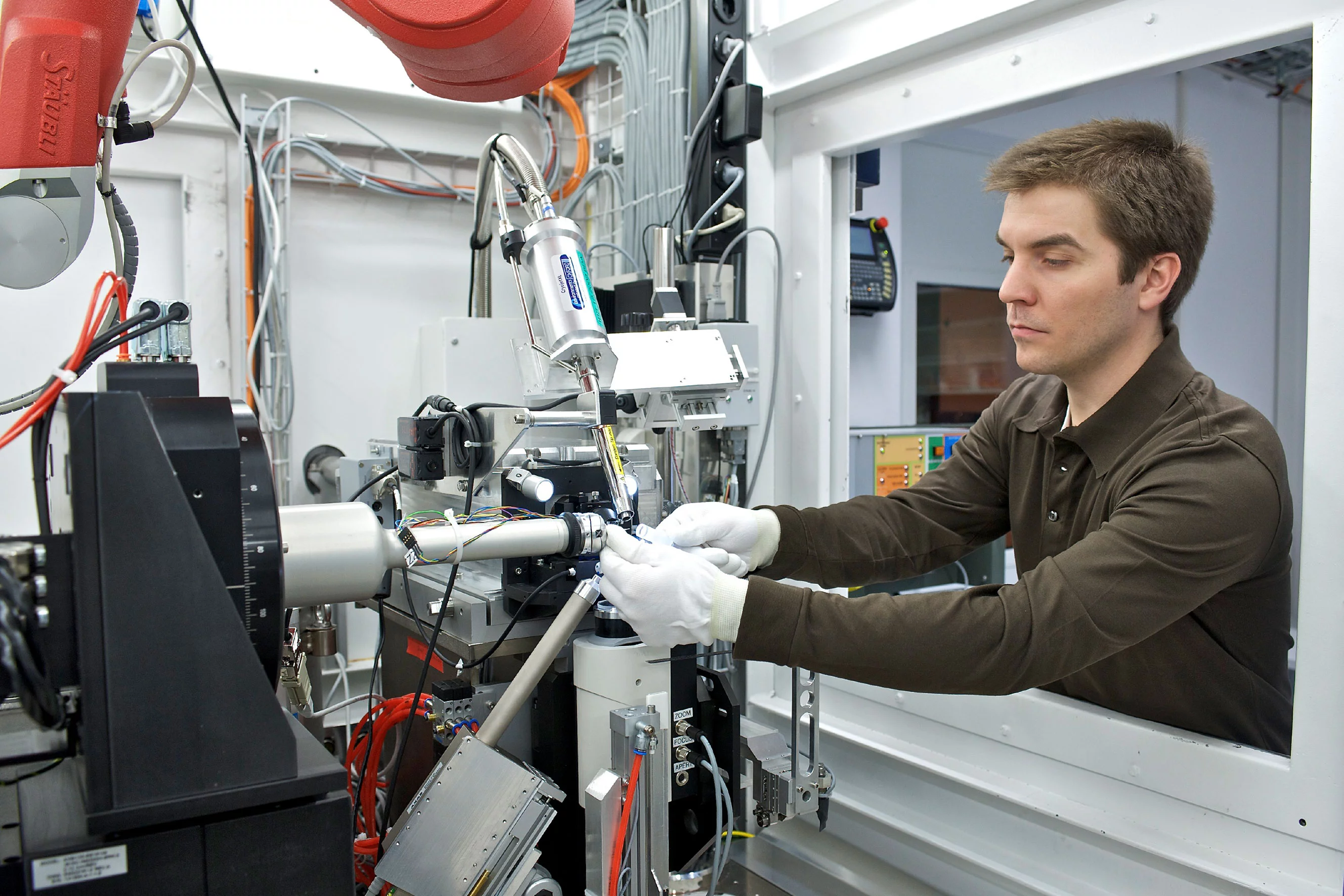Nobel Prize in Chemistry: Measurements at PSI enabled detailed understanding of genetic scissors
The Paul Scherrer Institute PSI congratulates Emmanuelle Charpentier and Jennifer Doudna on winning this year's Nobel Prize in Chemistry. Experiments at the Swiss Light Source SLS in 2013 made it possible to elucidate the structure of the protein complex CRISPR-Cas9 and thus to better understand its function as genetic scissors.
"At the time we didn't know how important this protein would become shortly afterwards," says Vincent Olieric, beamline scientist at PSI. In September 2013, biochemist Martin Jinek brought crystals of the Cas9 protein from two different bacteria to PSI to be closely examined using X-ray light from SLS. A postdoctoral researcher in the laboratory of Jennifer Doudna at UC Berkeley until 2012, Jinek had just assumed a professorship at the University of Zurich. Vincent Olieric helped him carry out the measurements at the SLS. Deciphering the structure of proteins down to the level of individual atoms is a specialty of PSI.
"It was quite a challenging task to determine the enzyme's structure," Olieric recalls. "A lot of data had to be collected for this, and a lot of crystals had to be screened. Finally he had one crystal that was very good, and from the data of this measurement he was able to model a very accurate structure."
A look at the details
The genetic engineering tool consists of several components. One of them is the enzyme Cas9, which can selectively cut DNA. To understand how it works, one has to know the protein structure exactly. The most reliable way is crystal structure analysis. For this, crystals of the protein are irradiated with synchrotron light; from the resulting diffraction pattern, the molecular structure can be determined using complex computational methods.
As the X-ray crystal structure analysis of Cas9 revealed, the enzyme consists of two interconnected areas. One of them binds DNA and cuts it. Because determining the structure of macromolecules like the Cas9 enzyme is so challenging, Olieric and his colleagues at PSI subsequently developed a new method of data collection to help with this task. For this purpose, Olieric later worked closely with Martin Jinek. "By that time, however, we already knew the importance of CRISPR-Cas9. It was already being used in laboratories around the world." That the Nobel Prize in Chemistry this year went to Emmanuelle Charpentier and Jennifer Doudna came as no surprise to Olieric: "Everyone knew that this would happen at some point."
Text: Paul Scherrer Institute/Brigitte Osterath
Contact
Dr. Vincent Olieric
Laboratory for Macromolecules and Bioimaging
Paul Scherrer Institute, Forschungsstrasse 111, 5232 Villigen PSI, Switzerland
Telephone: +41 56 310 52 33, e-mail: vincent.olieric@psi.ch [English, French]
Original publication
Structures of Cas9 Endonucleases Reveal RNA-Mediated Conformational Activation
M. Jinek, F. Jiang, D. W. Taylor, S. H. Sternberg, E. Kaya, E. Ma, C. Anders, M. Hauer, K. Zhou, S. Lin, M. Kaplan, A. T. Iavarone, E. Charpentier, E. Nogales, J. A. Doudna
Science, 14 March 2014 (online)
DOI: 10.1126/science.1247997
Copyright
PSI provides image and/or video material free of charge for media coverage of the content of the above text. Use of this material for other purposes is not permitted. This also includes the transfer of the image and video material into databases as well as sale by third parties.

